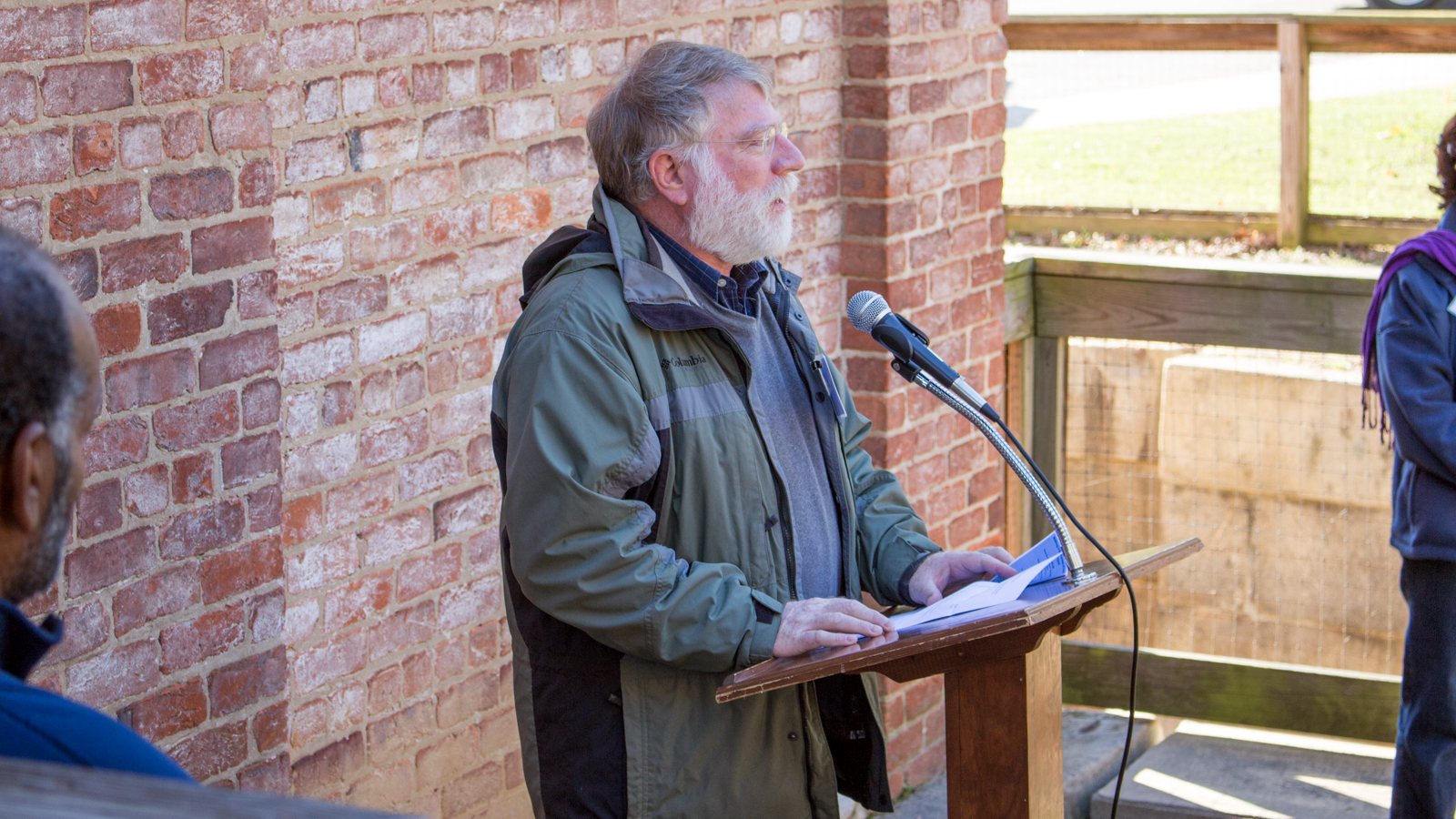Professor Helps N.C. County Interpret Connection to Underground Railroad

Across North Carolina, the National Park Service recognizes about a dozen sites that helped form the Underground Railroad. Three of them are in Halifax County.
Located in the northeastern corner of the state, Halifax had several appeals for freedom seekers. For one, its proximity to the Roanoke River created a geographic opportunity. Runaway slaves could follow the waterway to the Albemarle Sound and, in turn, the Great Dismal Swamp or the open waters of the Atlantic.
Halifax was also home to the largest free black population in North Carolina during the antebellum period. And in nearby Northampton County, a community of anti-slavery Quakers were known to give an assist.

NC State University historian David Zonderman has spent the past three years helping Halifax interpret its deep connection to the Underground Railroad. After performing humanities extension work with the local school system for more than a decade, Zonderman engaged with the Halifax County Convention and Visitors Bureau to develop a plan to share the county’s history with the public.
In a comprehensive report published in 2013, he charted current strengths Halifax could build on, which at the time included two Underground Railroad sites recognized by the National Park Service’s Network to Freedom. He also laid out possible themes, partners, funding sources and ideas to pursue in the future.
“The visitors bureau and several local residents had a real interest in exploring and publicizing the county’s history at a deeper level,” Zonderman said. “I got involved as a public historian, helping the community answer the question, ‘How do we get this information out to the public, in a way that conveys this rich history?’”
Soon after Zonderman issued his report, a citizen committee formed to put the plan into action. And with Zonderman serving as a facilitator, the group took on its first project: adding the Roanoke Canal to the county’s existing Underground Railroad sites (the Old Town of Halifax and the Roanoke River).
Zonderman said when he started the project, he made a commitment to ensure that all initiatives had historical accuracy and depth. So, to support the committee’s work, he relied heavily on innovative research from one of NC State’s own graduate students, Jamie Patrick-Burns.
While finishing her M.A. in public history in 2013, Patrick-Burns spent four months as a research intern at the visitors bureau. At the core of her study were historical newspaper advertisements posted by slave owners who believed fugitive slaves were heading toward Halifax. The ads, many of which are archived in UNC-Greensboro’s Digital Library on American Slavery, often offered a bounty to anyone who recognized, reported or killed a runaway slave.
Pinning each advertisement to its place of origin and noting departure dates and slave names, genders and occupations, Patrick-Burns mapped more than 150 freedom seekers who were thought to be fleeing Halifax or heading that way. She also created a heat map, which created another visual representation of where runaway slaves were coming from.
“When you take a look at those maps, you can see that clearly there was something going on in Halifax,” Zonderman said. “Many of the ads would often specifically say that a certain slave was thought to be heading toward the county.”
Using Patrick-Burns’ research and other historical information, the citizen committee won approval in the fall of 2015 for the Roanoke Canal to be added to the Park Service’s Network to Freedom. After adding historical markers at two locations along the waterway, the group held a public celebration and commemorative walk in November 2015 that drew a crowd of more than 100 residents.
“What we’re trying to do is stimulate questions,” Zonderman said. “One of my goals is to encourage the community to put up more interpretive signs throughout the county.”
In fact, Zonderman left the committee several “blue sky ideas” for expanding upon the work it has done: cross-marketing with other designated sites and local agritourism draws; writing an interpretive drama; and transforming an old elementary school into a national Underground Railroad historical center.

“If they developed a really big network of these heritage sites and marketed them to the right community, I think they could get visitors,” Zonderman said. “Hopefully they’ll decide to pursue some of these options.”
Zonderman’s connection to Halifax County goes back nearly 15 years, when he began working with schools in Roanoke Rapids through the U.S. Department of Education’s former Teaching American History grant program. As an NC State faculty member, Zonderman trained and gave pedagogical support to middle and high school teachers for five summers. Since then, he’s continued to work with AP history and government classes through a Gilder Lehrman Institute of American History Teaching Literacy through History program.
His long history of working with teachers in the county made him an easy choice for the visitors bureau’s Underground Railroad project.
“It’s been a really great project — one that still has potential to grow,” Zonderman said. “I hope that someday Halifax County has a national model for presenting Underground Railroad sites and integrating them into a heritage development plan that benefits the local economy.”
To learn more about the Underground Railroad in Halifax County, go to halifaxundergroundrr.com.


